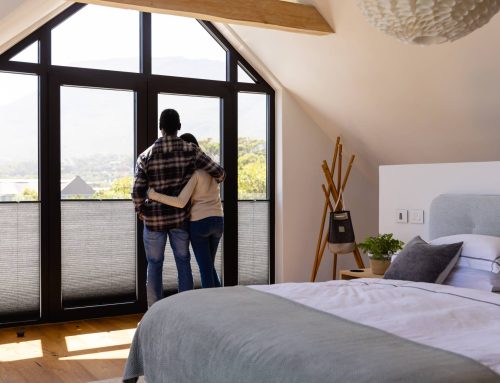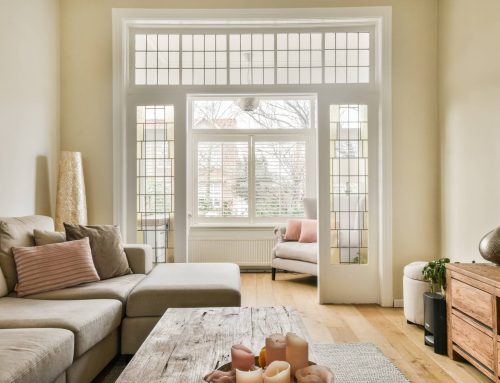Bay windows are commonly found in residential architecture and are used in various styles of homes. They add architectural interest to both the interior and exterior of a building. Bay windows project outward from the façade of the building, creating a three-dimensional effect. This design allows for a wider field of view and increased exposure to natural light. Often composed of multiple windows, bay windows can come in various configurations, including rectangular, hexagonal, or octagonal.
Bay windows have been a popular architectural feature for many years and are often considered classic and timeless. Their design can add character and charm to both traditional and contemporary homes. While architectural trends may evolve, several factors contribute to the timelessness of bay windows. Here are some of them:
Architectural Versatility
Bay windows can be seamlessly incorporated into various architectural styles, including traditional, Victorian, and modern. Bay windows can be constructed using a variety of materials, including wood, vinyl, or aluminum. This flexibility in material choices allows them to match the overall material palette of different architectural styles. Furthermore, the design of bay windows, with their classic protruding shape, has a timeless quality that can evoke a sense of tradition. At the same time, their clean lines and adaptability to modern design elements allow them to blend seamlessly with contemporary architectural styles. The adaptable nature of bay windows allows them to enhance the visual appeal of different types of buildings, ensuring they remain relevant across diverse architectural trends.
Natural Light
With their outward projection and multiple panes, bay windows allow an abundance of natural light to enter the interior space. The interplay of light and shadow created by bay windows adds a dynamic and visually appealing element to the interior. The play of light enhances the architectural details of the windows. Furthermore, the emphasis on natural light aligns with sustainable and energy efficient design principles. The use of daylight reduces the need for artificial lighting during the day, contributing to energy savings—a timeless aspect that continues to gain importance in contemporary architectural practices. The resulting bright and airy atmosphere facilitated by bay windows creates a timeless and inviting environment. The appreciation for well-lit spaces is a constant across different design eras.
Aesthetic Appeal
The distinctive outward projection of bay windows adds architectural interest and a sense of depth to both the interior and exterior of a building. The elegant arrangement of bay windows contributes to the home’s overall aesthetics, creating a sophisticated and timeless look that remains appealing across different design styles. Bay windows may also include architectural detailing, such as mouldings, trims, or decorative elements. These details add a touch of craftsmanship and timelessness to the design. Furthermore, the careful placement and proportion of bay windows enhance the architectural harmony of the home and creates a timeless and balanced composition. These visual qualities make bay windows a sought-after and enduring feature in various architectural contexts.
Connection to Outdoors
Bay windows provide extended views of the surrounding outdoor environment. This panoramic view fosters a strong connection to nature, allowing occupants to appreciate the changing seasons and the beauty of the outdoors. The space created by bay windows can serve as a transition zone between the indoor and outdoor spaces. Whether used as a reading nook, a seating area, or a place for indoor plants, bay windows allow occupants to experience seasonal changes, such as falling leaves in autumn, snow in winter, or blossoming flowers in spring, from the comfort of their indoor living spaces. The desire for a connection to nature has cultural and historical significance across various societies and time periods. By facilitating this connection, bay windows tap into a timeless aspect of human experience that transcends changing architectural styles and preferences.
Functional Flexibility
The functional flexibility of bay windows allows them to serve a range of purposes, meeting the diverse needs of homeowners. Bay windows can create the perception of additional living space within a room. The additional space provided by bay windows can be transformed into versatile seating areas, such as a cozy reading nook, sunlit spot for relaxation, or extra seating for socializing. The space created by bay windows can also be utilized for storage solutions. Whether incorporating built-in cabinets, drawers, or window seats with hidden storage compartments, the functional flexibility of bay windows allows them to meet storage needs. The extended sill space of bay windows also provides an opportunity for displaying decorative items, plants, or art. This allows homeowners to showcase their personal style and preferences. This enhances the practicality and timelessness of bay windows.
Timeless windows play a crucial role in creating aesthetically pleasing and adaptable buildings. Their enduring qualities contribute to architectural continuity, cultural significance, and long-term value. Ultimately, the timeless nature of bay windows may depend on your individual taste and how well the windows fit the overall design and style of your home. If you are planning a replacement windows and doors project, consulting with a windows and doors expert can help you make an informed decision.






